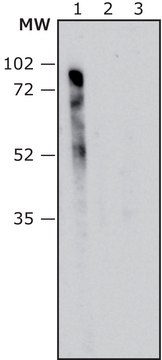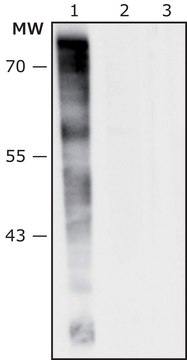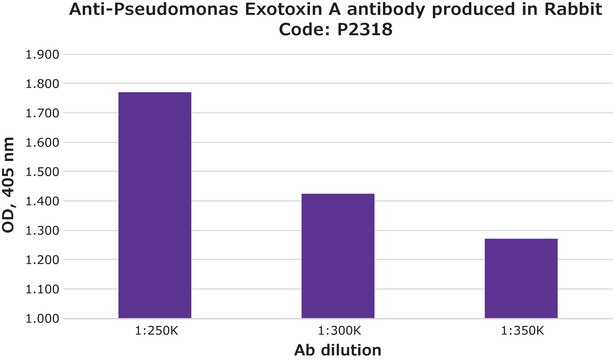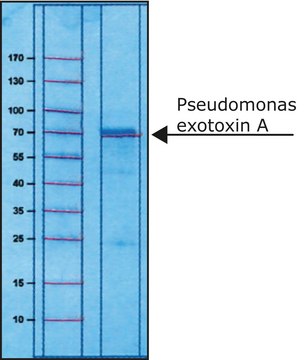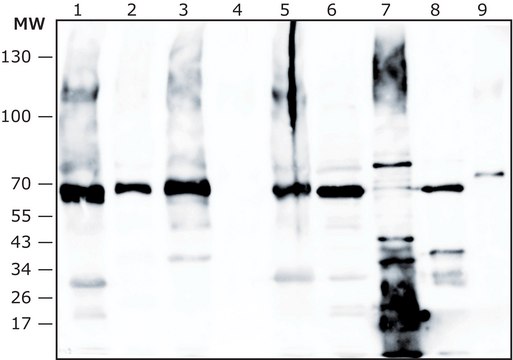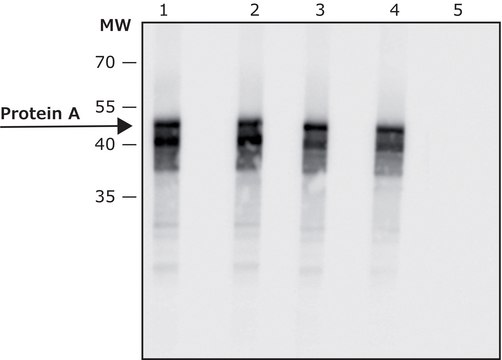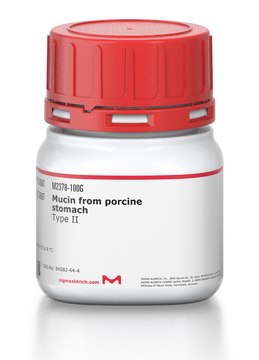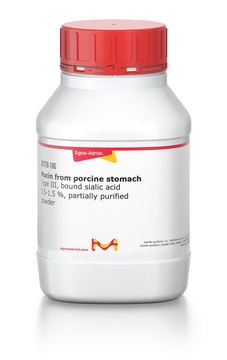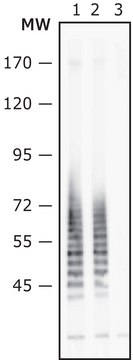SAB4200871
Anti-Pseudomonas aeruginosa Exotoxin A antibody, Mouse monoclonal
clone EXO-68, purified from hybridoma cell culture
Synonym(s):
ETA, PE, Pseudomonas Exotoxin A
About This Item
Recommended Products
antibody form
purified from hybridoma cell culture
Quality Level
clone
EXO-68
form
liquid
species reactivity
Pseudomonas aeruginosa
concentration
~1 mg/mL
technique(s)
ELISA: 2.5-5 μg/mL using Exotoxin A from Pseudomonas aeruginosa for coating.
immunoblotting: 0.125-0.25 μg/mL using exotoxin A from Pseudomonas aeruginosa.
isotype
IgM
storage temp.
−20°C
target post-translational modification
unmodified
General description
Specificity
Application
Biochem/physiol Actions
Physical form
Storage and Stability
Disclaimer
Storage Class Code
12 - Non Combustible Liquids
WGK
nwg
Flash Point(F)
Not applicable
Flash Point(C)
Not applicable
Regulatory Information
Choose from one of the most recent versions:
Certificates of Analysis (COA)
Don't see the Right Version?
If you require a particular version, you can look up a specific certificate by the Lot or Batch number.
Already Own This Product?
Find documentation for the products that you have recently purchased in the Document Library.
Our team of scientists has experience in all areas of research including Life Science, Material Science, Chemical Synthesis, Chromatography, Analytical and many others.
Contact Technical Service